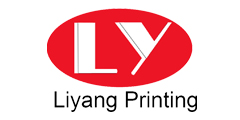[Chinese Packaging Network News] Food and paper packaging materials is a direct contact with food packaging materials, its quality and safety is also a public concern. The purpose of this paper is to comprehensively analyze the current method for detecting the residual amount of fluorescent whitening agent in food packaging materials, and the current status of national and industry standards.
Problems with food paper packaging
In recent years, food safety issues have attracted wide public attention. With the progress of the times, people's attention has been more than food itself, and the safety of food contact materials has also attracted more and more people's attention. The safety performance of food contact materials directly affects the quality of food. Some unscrupulous traders use waste recycling materials for profit maximization, and even add various illegal additives when producing and processing food and paper packaging materials to achieve cost savings and appearance changes. purpose. In October 2010, the International Food Packaging Association announced the sampling results of a variety of instant noodle barrels, tea cups, disposable cups and paper bowls that were commercially available and used in the market. The results showed that many well-known brands used double-layered paper products. The layered paper has an excessive amount of fluorescent substances.
Fluorescent Brightener Overview
Fluorescent brighteners (FWAs) are optical brighteners. Their whitening principle is different from that of chemical oxidation. It absorbs ultraviolet rays in the environment and emits blue-violet fluorescence, which is then released with the substrate that needs to be whitened. The yellow light superimposed to form white light, giving the product a white-feeling sensation while also increasing the brightness of the product. This excellent feature of FWAs makes it widely used in textiles, papers, synthetic detergents and other production areas, but because FWAs are a complex organic compound, it is difficult to pass the normal metabolism once it binds to certain proteins in the human body. Expulsion from the body, while the fluorescent whitening agent will weaken the body's resistance, resulting in difficult to heal the wound, once the FWAs are enriched in the human body to a certain concentration, it may induce cancer. At present, there are about 15 major types of FWAs produced in the world (excluding relevant derivatives derived from their fluorescent properties). According to their chemical structure, they can be classified into triazine amino stilbene, pyrazoline, and naphthalene diacetate. Amines, benzoxazoles, and coumarins have been reported in many documents at home and abroad for the abuse of FWAs in food packaging papers.
Detection of fluorescent brighteners in food packaging materials
There is a wide variety of packaging materials that are in direct contact with food, including plastic, paper, and laminated film bags. Due to the high production cost of paper packaging materials and the ease of recycling, there are many phenomena in using waste paper and recycled paper. However, in order to hide paper defects, improve whiteness, and improve product appearance, unscrupulous companies will use them or produce paper pulp during production. Fluorescent whitening agent was added, and China's compulsory health standard "Hygienic Standards for the Use of Additives for Food Containers and Packaging Materials" (GB9685-2008) clearly stipulated that the maximum amount of FWAs 87 used in paper is 0.30%, while domestic testing standards GB/T 5009.78-2003, DB51/T 907-2009, and NY/T1257-2006 are mostly qualitative methods that cannot accurately detect the content of fluorescent brighteners in samples. The EU EN 64-2006 standard is a qualitative semi-quantitative The detection method, in summary, is currently the method of detecting fluorescent whitening agents are mostly qualitative methods, there is no quantitative detection method at the national and industrial standards level.
With the rapid development of the food industry, the development of food contact materials has also been rapid, and the use of additives and processing aids has also increased year by year. From the results of the survey, China's mandatory standard "Standard for Paper Packaging Paper Hygiene" (GB11680-1989) has clearly defined "food contact paper packaging can not be added fluorescent whitening agent whitening, food contact paper cups can not use recycled raw materials" However, under such circumstances, fluorescent substances in food contact materials can also be detected in the supervision and inspection of some inspection and inspection institutions. This also shows that on the one hand, China currently lacks the supervision and inspection of such pollutants. The technical conditions are therefore very passive to supervise the quality and safety of such food contact materials, but with the development of fluorescent whitening agent limits, the EU will gradually attach importance to the detection of such pollutants, which will have a The export trade of food packaging materials has an important impact, so this paper briefly analyzes the current status and detection methods of fluorescent whitening agents in food packaging materials in order to provide guidance and support for quantitative detection method research.





